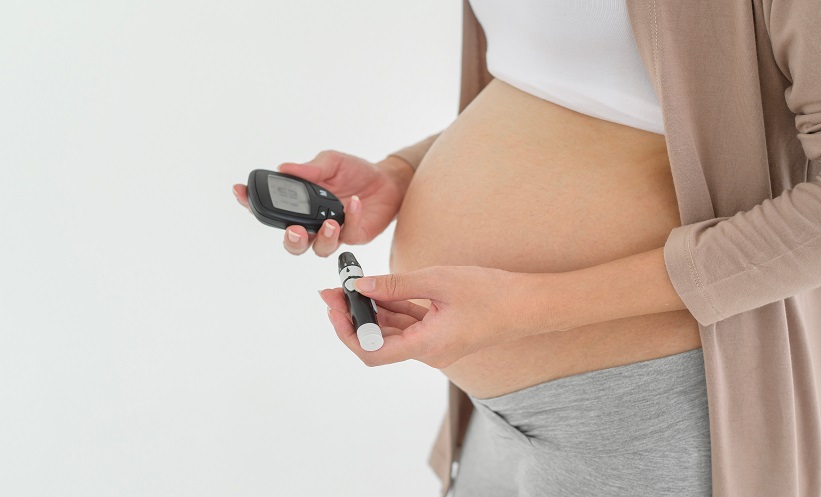Abstract
Diabetes is one of the most significant comorbidities associated with COVID-19 susceptibility and severity, and recent statistics have identified that up to half of all individuals with COVID-19 have had diabetes. Over 90% of people with Type 2 diabetes mellitus are overweight or obese, and obesity itself increases the severity of COVID-19 and the risk of needing intensive care and ventilation. Careful glycaemic control improves outcomes for individuals with diabetes and also significantly reduces risks if they become infected with COVID-19. It is, therefore, essential that research focuses on effective ways in which to manage Type 2 diabetes mellitus during this global pandemic. What healthcare professionals focus their attention and resources on is also crucial to its niftiness and, considering that patient self-management is key to effective glycaemic control, it makes sense that healthcare practitioners call on the patient for some advice.
COMMENTARY
Diabetes is one of the most significant comorbidities associated with COVID-19 susceptibility and severity,1 and recent statistics have identified that up to half of all individuals with COVID-19 have had diabetes.2 Furthermore, over 90% of people with Type 2 diabetes mellitus (T2DM) are overweight or obese3 and obesity itself increases the severity of COVID-19 and the risk of needing intensive care and ventilation.4,5 Moreover, COVID-19 can potentially predispose individuals to severe illness and poorer disease outcomes as hyperglycaemia modulates immune and inflammatory responses.6 Careful glycaemic control improves outcomes for individuals with diabetes and also significantly reduces risks if they become infected with COVID-19.7 It is, therefore, essential that research focuses on effective ways in which to manage T2DM during this global pandemic. Current guidance for managing diabetes during COVID-19 recommends tight control of glucose levels with frequent monitoring,8 alongside eating well, staying connected, and remaining active.9 Although insulin and dipeptidyl peptidase 4 inhibitors are reported as safe for patients with diabetes and COVID-19, the evidence points to personalised adjustment to medication.8 What healthcare professionals focus their attention and resources on is crucial to its niftiness and, considering that patient self-management is key to effective glycaemic control,10 it makes sense that we call on the patient for some advice.
It is assumed that medical staff would be implicitly interested in the patient as a whole person living with a chronic disease. Moreover, patients with chronic illness tend to generate self-management strategies automatically as they learn to live with their illness.11-13 This can be communicated to medical staff, which, in turn, can empower the patient and encourage a collaborative patient–staff relationship.13 While it is clear that recent years have witnessed a slight shift in thinking within the field of medicine and healthcare, moving toward a more patient-centred approach to care,14 the extent to which this shift has translated into practice remains questionable.
Indeed, on reviewing current literature on diabetes management, the weight still leans heavily toward what the physician is doing to manage the illness during COVID-19, with negligible reference to the voice of the patient. Patient-led pathways have been a topic for debate since the last millennium;14,15 however, there is yet to be any real paradigm shift in the practical management of diabetes.
Moreover, supporting diabetes self-management to reduce the risk of complications is central to national policy.16 However, the reality of managing this condition is complex and challenging in normal times, with individuals often not conforming to recommended self-management practices.17,18 We therefore need to understand how the COVID-19 pandemic has affected self-management of T2DM, changes in illness and risk perceptions, and any links with coping strategies and outcomes, e.g., glycaemic control.
This information would provide understanding of changes in stress, wellbeing, resilience, and coping at this time and identify barriers and facilitators to effective self-management. In turn, enhancing known difficulties would provide understanding for key clinicians to use and adapt their approaches to assist the patient with self-managing their condition. Novel research using this fresh approach will provide a body of evidence and vital understanding of the specific needs of patients that can be used to develop support mechanisms and new management strategies for this vulnerable group during the current crisis and for future waves of the pandemic.5,19
It is vital that the effect of COVID-19 restrictions on self-management in T2DM is understood because this group generally experience poor health outcomes.20,21 Moreover, up to half of those who test positive for COVID-19 have diabetes and are more vulnerable to critical effects and mortality compared with the general population.22 Diabetes can often be difficult to self-manage but careful management and control significantly improves health outcomes,2,18 not only when individuals have COVID-19 but also during more normal times. Now there is a unique opportunity to generate essential knowledge of how this patient group have self-managed their condition during a period of stress, isolation, and uncertainty. What can be learnt now will generate a core understanding of approaches to managing a condition that is doubling in prevalence every 20 years in the Western world.22 These are lessons that can be applied nationally and internationally.
RESEARCH INTO THE PATIENT PERSPECTIVE
A multi-method research approach would be necessary to tackle this and fully appreciate how individuals self-manage and cope with T2DM during a global pandemic and the aftermath, as well as the influence that illness and risk perceptions play on their actions.
The authors propose that future research adopts a longitudinal approach to the collection of routine data from established clinical diabetes information systems to explore the effects of living with diabetes during a pandemic on glycaemic control. This way, key lessons can be learned from the patients themselves about how people with T2DM are supported to optimally self-manage their condition.
Furthermore, gaining a full appreciation of the difficulties, complexities, and effects of T2DM self-management during a pandemic from patients’ perspectives would provide vital insight and understanding into how people self-manage. Comparing and contrasting those who have found self-management most challenging with those who appear the most resilient would generate information used to underpin support strategies and new approaches for key clinicians to assist with diabetes self-management for those most vulnerable to poorer health outcomes.
To gain a rich and insightful understanding about how the COVID-19 pandemic has affected individuals with T2DM in terms of illness and risk perceptions, self-management, and glycaemic control, researchers should be asking patients to express their experiences with the following qualitative questions:
- What were your perceptions of risk (of both COVID-19 and T2DM) during the COVID-19 pandemic?
- How do these perceptions appear to have been affected by the pandemic?
- How did you experience illness self-management during the COVID-19 pandemic?
- How did you perceive the effects on your health and/or glycaemic control?
- What improvements and/or deteriorations in your glycaemic control became apparent during the COVID-19 pandemic?
- What factors do you consider to be most important in managing diabetes during a pandemic?
- What decisions and/or changes did you make to your self-management routine during the COVID-19 pandemic?
- What might healthcare providers do better to support patients and their families during a pandemic?
- What strategies worked best for you in managing your diabetes during COVID-19?
It is important to explore influences on individual responses during the health crisis and identify sources of individual and collective resilience when listening to a patient. This would ascertain support needs during this and future waves of the pandemic (short-, medium-, and long-term). It will also determine what can be done now to equip societies and vulnerable groups for health emergencies in the future, which can then also be applied to those individuals who experience difficulties in normal times. A narrative approach to interviews would allow the individual experiences, which are the most significant, to emerge. Alongside narrative interviews, introspective methods can also be used to encourage self-examination and analysis to ensure that patients can tell their own story and explore how they have coped under pandemic-related stress. In turn, this can identify problems, actions, and motives. Quantitative methods can be utilised for analysing routine data relating to blood glucose control prior to and during the COVID-19 pandemic. This method would provide immediate and necessary information relating to the effects of the pandemic on glycaemic control and how this differs across population groups. Analysis of these available healthcare data would offer an objective portrayal of the consequences of the pandemic for people self-managing T2DM.
CONCLUDING REMARKS
Overall, the authors’ opinion is one that hears the patient voice and speaks directly to patient-centred care. In many ways, the recent COVID-19 pandemic has permitted the patient to take ownership over their condition to a greater extent than may have been the case pre-COVID-19. However, it is certainly time that healthcare professionals fully engage with patients to learn the best ways to support them in managing their T2DM. Placing the patients and their families at the forefront when it comes to deciding on what might be the optimal strategies for diabetes self-management is the way forward, and the COVID-19 pandemic might have just prompted healthcare professionals in reaching this sure-fire end-goal for medicine with more haste.







